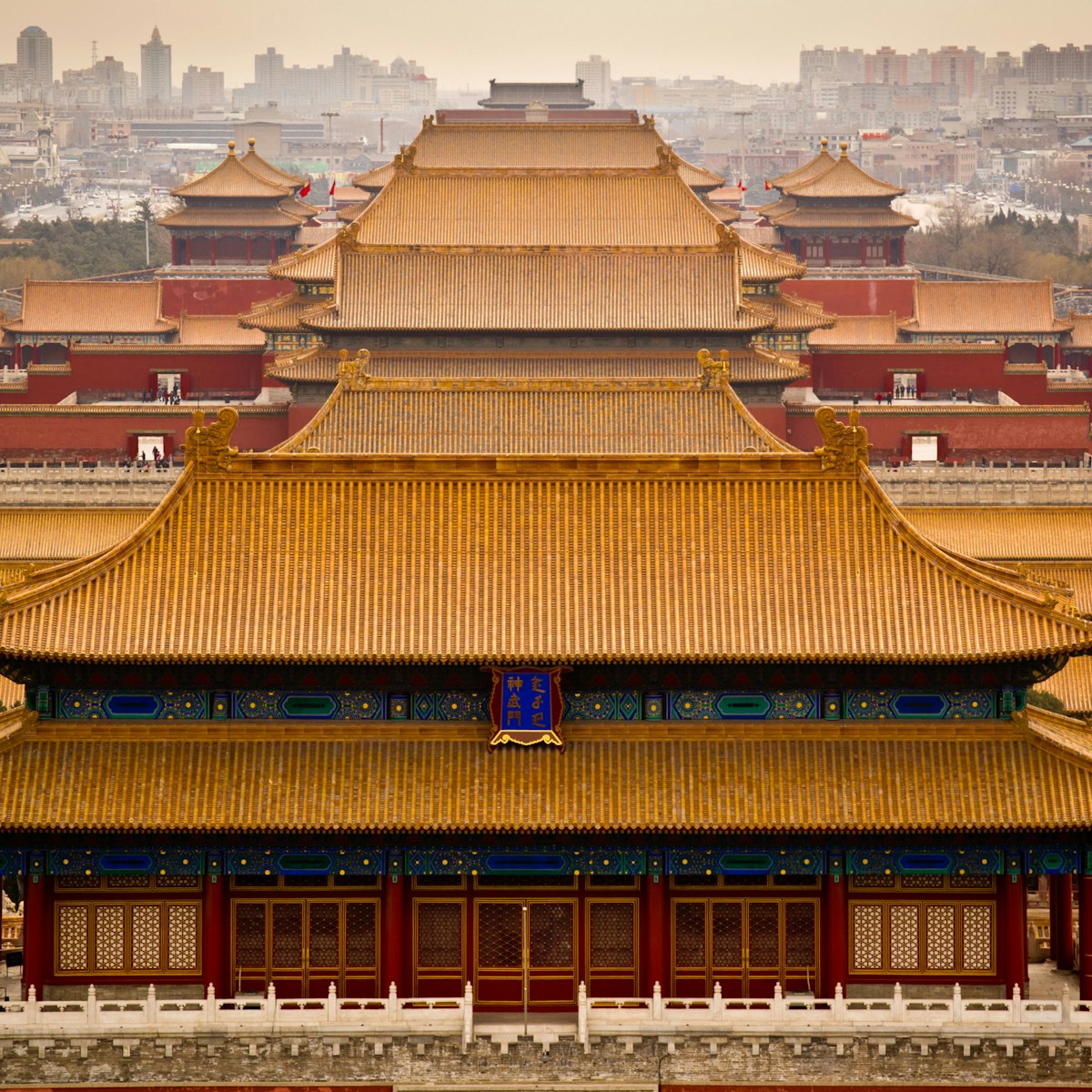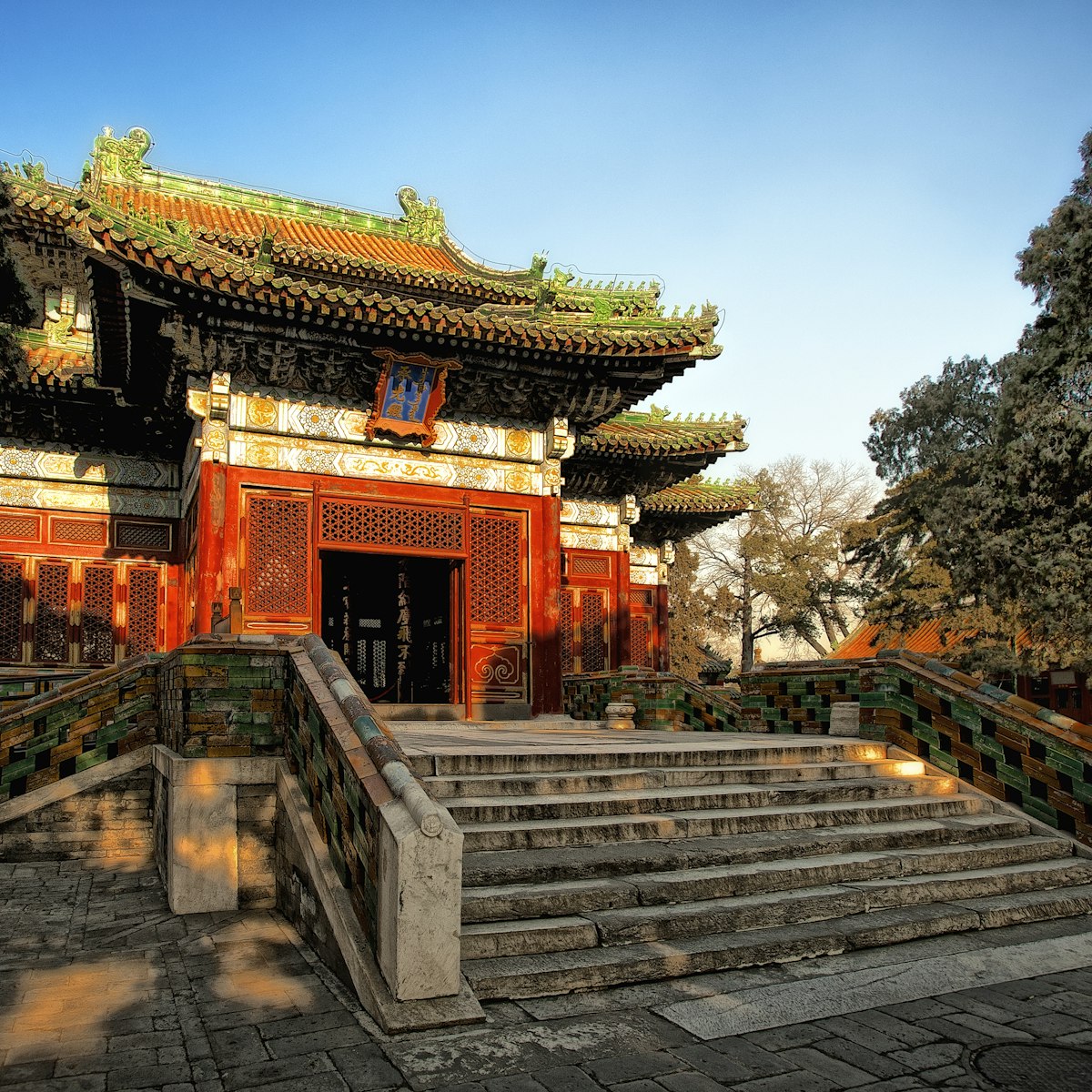The main attraction within the Workers' Cultural Palace is the monumental Sacrificial Hall, as exquisite as any temple you'll find in Beijing. Built in 1420, it was used by Ming and Qing dynasty emperors to pray before the wooden spirit tablets of their ancestors. The hall now hosts temporary cultural exhibitions, but the awesome scale and artistry of the interior is reason alone to pay the entry fee.
Note how the plaque above the Sacrificial Hall is inscribed in both Chinese and Manchu, the language of the Qing.







